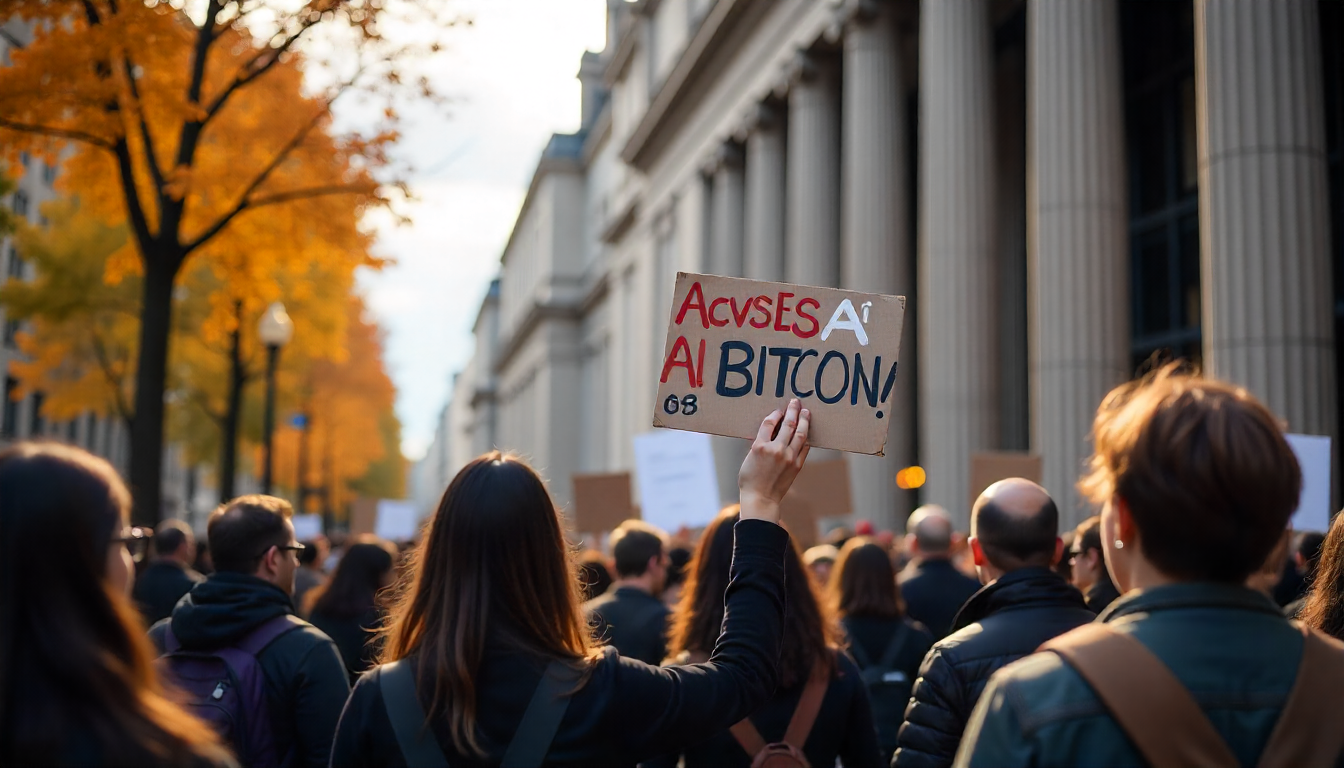A groundbreaking disclosure from Mistral AI has stirred a fresh comparison between Bitcoin and artificial intelligence, putting the spotlight on their respective environmental footprints—and revealing just how different the two technologies are in design, operation, and impact.
In a rare move for the AI sector, Mistral detailed the resource usage of its flagship model, Mistral Large 2. Over an 18-month period, the model’s training and operation emitted 20.4 kilotonnes of CO₂, consumed 281,000 cubic meters of water, and used 660 kilograms of antimony-equivalent materials. Each chatbot reply from its platform Le Chat uses a mere 1.14 grams of CO₂, 45 milliliters of water, and 0.16 milligrams of minerals.
By contrast, Bitcoin’s environmental impact is orders of magnitude higher. A single BTC transaction consumes between 600 and 700 kg of CO₂, over 17,000 liters of water, and more than 130 grams of e-waste. According to the Cambridge Centre for Alternative Finance, Bitcoin’s global network emitted 48 million tonnes of CO₂, used 2 billion+ liters of water, and created 20,000+ tonnes of e-waste in 2023 alone.
Context Matters: Power Sources and Geography
Despite these stark numbers, the data needs context. Bitcoin’s energy mix is more diverse than critics suggest. A 2023 survey by Batcoinz revealed that hydro, wind, and solar account for over 40% of Bitcoin’s power use, with nuclear energy contributing 7.9%. Fossil fuels make up the remaining 44%.
AI platforms like Mistral often benefit from cleaner grids by default. European data centers, for instance, rely heavily on nuclear, giving Mistral a lower emissions profile. But if the same model were trained in coal-reliant U.S. regions, its footprint would increase significantly.
Usage Models: Constant Mining vs. On-Demand Computing
At the heart of the environmental gap lies a fundamental difference in design. Bitcoin’s proof-of-work algorithm requires continuous energy consumption—every 10 minutes, regardless of activity. That means its energy cost is fixed and time-driven.
AI’s model, in contrast, is usage-driven. While training large models consumes substantial power, the marginal energy cost of serving a single query is minimal. This makes scaling more efficient in terms of per-use impact, especially when powered by greener infrastructure.
Transparency vs. Utility
Mistral’s transparent reporting sets a new benchmark for the AI industry and offers a rare apples-to-apples comparison. But Bitcoin supporters argue that proof-of-work, though energy-intensive, supports a decentralized, censorship-resistant financial system with unique value.
Bitcoin’s environmental costs must also be viewed through its halving cycles, which reduce the rate of new coin issuance and push miners toward more efficient operations. Meanwhile, both sectors are under pressure to improve sustainability as they evolve into foundational components of the digital economy.
Markets at a Glance – July 23, 2025
- Bitcoin (BTC): Slipped to $119,500 from a record $123,100. Retail sell-offs on Binance have weakened Net Taker Volume below $60M, suggesting short-term bearishness.
- Ethereum (ETH): Down 3.1% to $3,696, amid signals of an upcoming correction despite strong institutional inflows.
- Gold: Gained 0.95%, reaching $3,430.41, supported by falling U.S. yields and global trade uncertainty.
- Nikkei 225: Jumped 1.71% on news of a U.S.-Japan trade agreement that adjusts tariffs, boosting Japanese exports.
- S&P 500: Closed at a new record 6,309.62, lifted by strong earnings despite mixed trading elsewhere.





